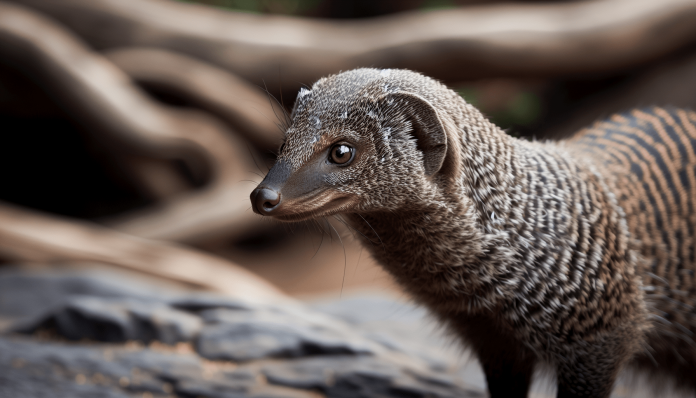
When pondering the question, “What is snake’s opposite?” 🐍 it’s essential to delve into the world of nature and symbolism. Snakes have long captivated human imagination, embodying both fear and reverence. To truly understand what stands in opposition to the snake, we must explore the multifaceted characteristics of these enigmatic reptiles and identify their natural and symbolic counterparts. 🌿
The Nature of Snakes 🐍
Physical Characteristics 🐍
Snakes are legless, elongated reptiles with flexible bodies. 🐍 They possess scales, a forked tongue, and a unique way of moving called lateral undulation. These traits enable them to thrive in diverse environments, from deserts to rainforests. Their ability to shed skin is symbolic of transformation and renewal.
Behavior and Adaptations 🐍
Snakes are known for their stealth and hunting prowess. 🐍 Most species are carnivorous, using venom or constriction to subdue their prey. Their sensory adaptations, such as heat-sensing pits and keen olfactory abilities, make them formidable predators. However, snakes can also be elusive and solitary, often avoiding human contact.
Symbolism and Cultural Significance 🌍
Throughout history, snakes have held significant cultural and symbolic meanings. 🐍 In many cultures, they are associated with both positive and negative attributes. In ancient Greek mythology, the snake is linked to Asclepius, the god of medicine, symbolizing healing and rebirth. Conversely, in Judeo-Christian tradition, the serpent in the Garden of Eden represents temptation and evil.
Finding the Opposite of a Snake 🌿
To determine the opposite of a snake, we need to consider various aspects of what snakes represent in nature and culture. 🌿 This exploration will lead us to potential opposites based on physical traits, behaviors, and symbolic meanings.
Physical Opposites 🌿
When considering physical traits, an animal with contrasting characteristics to a snake would be one with legs, fur or feathers, and a different mode of locomotion. 🦜 Birds, for example, possess these opposing traits. They have feathers, can fly, and exhibit social behaviors that are often the opposite of the solitary nature of snakes.
Birds 🦜
Birds are the antithesis of snakes in many ways. 🦜 Their ability to soar through the sky represents freedom and transcendence, contrasting with the grounded, slithering motion of snakes. Birds’ vibrant plumage and vocalizations also starkly differ from the often muted and silent nature of snakes.
Behavioral Opposites 🌿
Behaviorally, animals that exhibit social, cooperative, and nurturing traits could be considered opposites to snakes. 🐵 Primates, particularly those that live in complex social structures, demonstrate behaviors that contrast with the solitary and predatory nature of snakes.
Primates 🐵
Primates, including monkeys and apes, are known for their social bonds, cooperation, and communication skills. 🐵 They live in family groups, groom each other, and display empathy and intelligence. These traits are in stark contrast to the often solitary and instinct-driven behaviors of snakes.
Symbolic Opposites 🌿
Symbolically, finding an opposite to the snake involves identifying creatures or symbols that represent opposing ideas. 🌿 Since snakes often embody transformation, mystery, and danger, their symbolic opposite could be something that signifies stability, clarity, and safety.
Horses 🐴
Horses, throughout history, have symbolized strength, freedom, and nobility. 🐴 In many cultures, they are revered for their grace and reliability. The horse’s association with travel and exploration contrasts with the snake’s often hidden and elusive nature.
Examining Specific Examples 🌟
Let’s delve deeper into specific examples of animals that can be considered opposites to snakes based on the criteria discussed. 🌟
The Eagle 🦅
The eagle, a bird of prey, is often seen as the symbolic opposite of the snake. 🦅
Physical Traits 🦅
- Feathers vs. Scales: Eagles have feathers, which aid in flight, while snakes have scales, which aid in slithering.
- Wings vs. Limbless Body: Eagles possess powerful wings and talons, whereas snakes lack limbs entirely.
Behavior 🦅
- Flight vs. Grounded: Eagles soar through the skies, embodying freedom and vision, contrasting with the snake’s earthbound nature.
- Nesting vs. Burrowing: Eagles build nests in high places, symbolizing protection and elevation, while snakes often hide in burrows or under rocks.
Symbolism 🦅
- Majesty and Power vs. Mystery and Cunning: Eagles are symbols of majesty, power, and clarity, often representing higher vision and enlightenment. This is in stark contrast to the snake’s association with mystery, cunning, and the underworld.
The Dolphin 🐬
Dolphins, known for their intelligence and sociability, also serve as an excellent contrast to snakes. 🐬
Physical Traits 🐬
- Marine Mammal vs. Reptile: Dolphins are mammals that live in the ocean, while snakes are reptiles that can inhabit various environments.
- Smooth Skin vs. Scales: Dolphins have smooth, hairless skin, contrasting with the textured, scaled skin of snakes.
Behavior 🐬
- Social and Playful vs. Solitary and Predatory: Dolphins are highly social animals, known for their playful behavior and complex social structures, unlike the often solitary and predatory nature of snakes.
- Echolocation vs. Scent Tracking: Dolphins use echolocation for hunting and navigation, a method completely different from the olfactory tracking used by snakes.
Symbolism 🐬
- Joy and Protection vs. Danger and Transformation: Dolphins are symbols of joy, intelligence, and protection, often associated with positive, uplifting qualities. This contrasts with the snake’s symbolic association with danger, transformation, and sometimes malevolence.
Conclusion 📝
In conclusion, “What is snake’s opposite?” 🐍🌿 is a question that invites us to explore the rich tapestry of nature and symbolism. By examining physical traits, behaviors, and cultural meanings, we can identify various animals and symbols that stand in opposition to the snake. 🐍 From the soaring eagle to the intelligent dolphin, these creatures offer fascinating contrasts that enhance our understanding of the natural world and the diverse meanings we ascribe to its inhabitants. 🦅🐬
Understanding these opposites not only enriches our knowledge of animal biology and behavior but also deepens our appreciation for the symbolic language that shapes our perceptions and beliefs. 🌿 Whether in the realm of nature or mythology, the dualities presented by snakes and their opposites continue to captivate and inspire us.



















